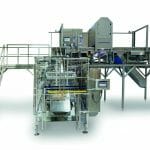The worldwide smart home security market is expected to reach $18 billion in 2020, with smart security systems becoming increasingly prevalent in people’s homes to protect against intruders, monitor entrances and detect floods. With sensors now dotted around the home, the power requirements of smart security devices have changed from traditional alarm systems, as J.D. DiGiacomandrea, applications engineering manager at global battery manufacturer Ultralife Corporation, explains.
Traditionally, alarm systems used wired sensors throughout the home to detect any intruders moving around in the property, relying on a neighbour to call the police if the alarm was set off. However, most smart security services can be controlled by a smartphone app, showing live cameras and allowing homeowners to view alerts.
As more parts of the home are being monitored by smart security sensors, the power requirements for the devices have changed. Sometimes, they cannot all be powered by the central mains supply, as wires are not practical or are too obvious. This means that manufacturers of these devices must carefully consider the power source they use.
For example, smart locks allow the homeowner to gain entry to their home by entering a code, unlocking and locking their door from a smartphone app, or using a key tag. It also provides an additional layer of security for the vulnerable or those with mobility issues, who can easily see who is at their front door with little-to-no movement required.
From a power perspective, the smart locks are often retrofitted onto existing doors and, given the location of the locks, they cannot be wired to the mains supply. However, the manufacturer must ensure they choose a reliable battery. If the lock was to fail due to a battery that suddenly runs out of power, or needed changing regularly, this could lock someone out of their home.
Choosing a battery from a well-respected manufacturer is therefore essential, as consumer off-the-shelf batteries are often insufficient for a security system. Innovative technologies that improve capacity, such as Ultralife’s Thin Cell technology, are essential in these applications.
However, capacity must be balanced by size. Security sensors are used in smart security applications to detect movement. If any movement is detected when the homeowner is out an alert can be sent to the connected smartphone, so they can use the camera to identify a potential threat or a false alarm.
For this system to be effective the sensors must be discreet, meaning the avoidance of mains wires, or an intruder could identify and try to avoid them. Worse yet, an intruder could cut the wires to disable the system, but it is impossible to cut a wireless connection! The smaller the sensor, the better, so a small yet reliable battery is essential for this type of application.
Thin Cell batteries are constructed in a pouch with square cells, rather than round cells in a square arrangement. This means more cells can be packed into the space, increasing the capacity, without increasing the size of the battery.
Security is such an important topic that device manufacturers must consider the power source early in the design process. And, with home automation intensifying, battery manufacturers should reflect on how to best power the multitude of sensors and devices which form the web of smart security systems.
If home automation equipment manufacturers fail to use innovative battery technology to ensure long lasting and reliable batteries, end users will soon become frustrated and therefore unlikely to invest in further technology. To ensure the continuation of the growth of the home automation market, choosing the right battery technology is key.







